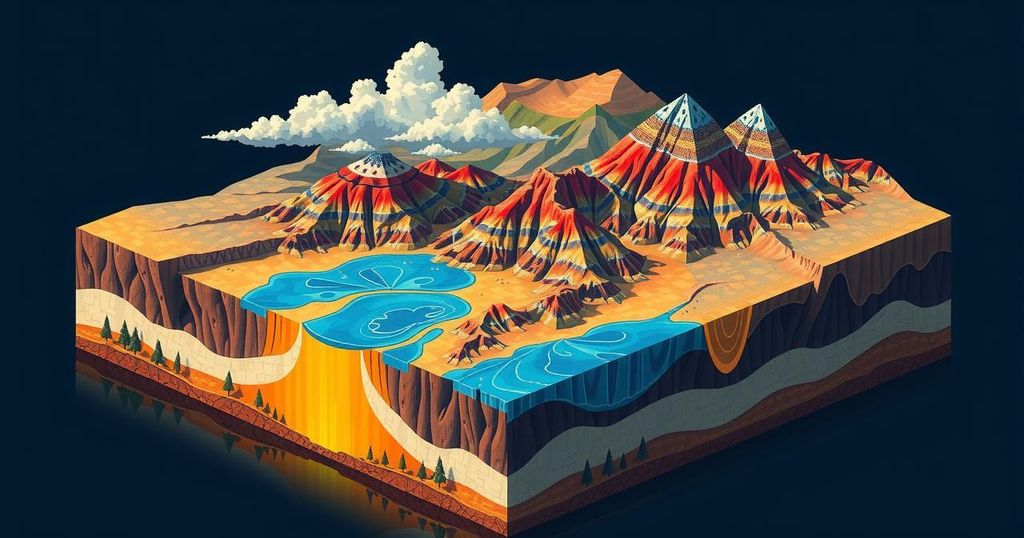The Evolution of Plate Tectonics: From Continental Drift to Modern Understanding

This article discusses the evolution of the plate tectonic theory, emphasizing Alfred Wegener’s concept of continental drift, supported by evidence from paleomagnetism and ocean studies. It highlights the dynamic nature of Earth’s geology, countering skepticism and affirming that the continents have undergone substantial shifts over millions of years, resulting in the formation of supercontinents like Gondwana and Pangea.
The theory of plate tectonics provides a comprehensive framework for understanding the movement of continental and oceanic plates, driven by forces arising from the Earth’s mantle. An essential concept within this theory is continental drift, first proposed by Alfred Wegener. His observations of congruent sedimentary rock formations across southern continents and India support the notion that these landmasses were once connected, forming the supercontinent Gondwana approximately 500 million years ago. The subsequent collision of Gondwana with Laurentia, which birthed Pangea, underscores the dynamic nature of Earth’s geology.
Despite significant opposition from contemporaries like Sir Harold Jeffreys, whose skepticism revolved around the assumed immobility of the mantle, the theory gained traction through advancements in paleomagnetism. As researchers like Stanley K. Runcorn demonstrated, readings of ancient magnetic properties provide compelling evidence for continental movement.
Further exploration of oceanic features, especially those cataloged by figures such as Bruce C. Heezen and Marie Tharp, illustrated vital components of the ocean floor, including ocean ridges, trenches, and transform faults, validating the mechanisms described by plate tectonic theory. This cumulative evidence underscores the stability of the continental fit over geological time, dispelling myths of mere coincidence.
Conclusively, the integration of paleomagnetic studies and oceanographic research revolutionized geological sciences, rendering the plate tectonics model a cornerstone of contemporary earth sciences.
Plate tectonics encompasses a series of scientific concepts explaining the movements of the Earth’s lithosphere, which is divided into tectonic plates. This theory includes the historical framework of continental drift, which suggests that continents are not static, but rather have shifted over time. The initial proposal by Alfred Wegener highlighted geological and paleontological connections among continents. The subsequent validation of this hypothesis arose through advances in geophysics and paleomagnetism, leading to a more unified understanding of Earth’s geological history.
The development of the plate tectonic theory represents a fundamental transformation in the understanding of Earth’s geological processes. It elucidates interactions among continental and oceanic plates, confirming the historic shifts in landmasses that were once viewed with skepticism. Through extensive research and technological advancements, hypotheses from Wegener and others have been thoroughly validated, affirming that the dynamic changes of our planet’s surface are both significant and ongoing.
Original Source: www.britannica.com







